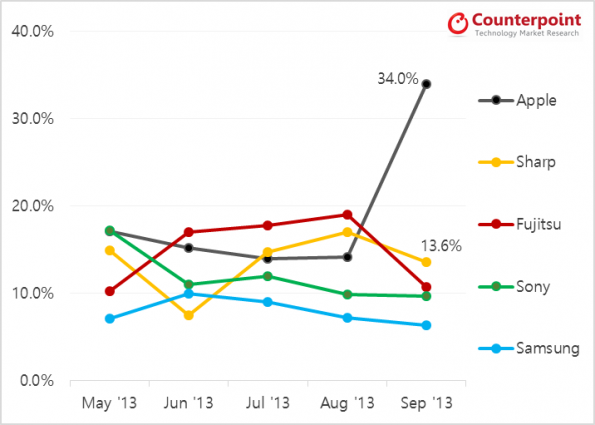Since the death of Apple’s charismatic (and controversial) leader, many analysts and tech watchers have been quick to dismiss the company’s future.
One of the refrains is that the company has lost its mojo: either the new products haven’t seemed as “new,” or product launches are lacking the magic of Steve Jobs’s Reality Distortion Field, which was known to make even hardened tech writers and critics lose their sense of objectivity. Stumbles with the Maps applications have been a blow to the company’s image, and the recent overhaul to the mobile operating system, iOS 7, has been met with mixed reviews: some are fans of the flat color scheme and simplified lines, while others are not.
Along with this week’s announcement of the iPad Air and an iPad mini with Retina display—which, while not revolutionary, will still have people dipping into their wallets—was some surprising news from the Japanese market. This quarter, Apple plucked itself a 34% market share in the Japanese handset market, the first time a smartphone maker has gone above 30% in ten years. Given that the market is fragmented among more than ten different manufacturers and three carriers, this is no mean feat.

Market share figures for 2013 (Source: Counterpoint Research.)
Although NTT DoCoMo’s launch of the iPhone last month didn’t stop the company from losing a record number of subscribers, the company still announced a 30% decrease in customer turnover over last year. In addition, competing offers between SoftBank, Au, and DoCoMo drove strong sales for the last generation iPhone 5. And despite the difficulty of getting an iPhone 5S (and the less popular 5C) around launch date, Japan has the highest concentration of the 5S and 5C in the world. Apple marked Japan as its fastest growing geographical segment last quarter, and this growth should continue as DoCoMo customers continue to jump over to iPhone models.
One thing is for sure: given the way that the Japanese like to accessorize their phones, you can expect to see a lot more creative cases as you go about your commute.
Image: Sebra / Shutterstock.com









